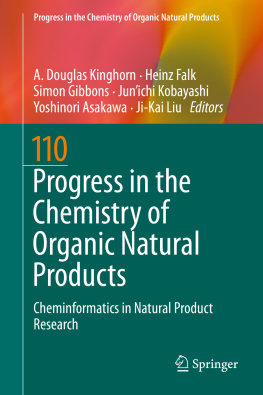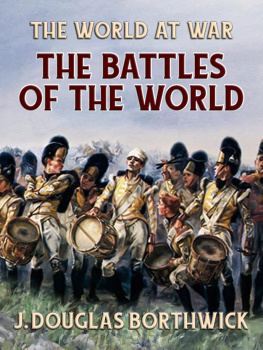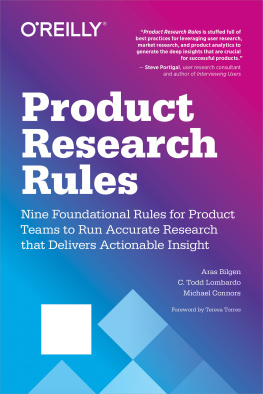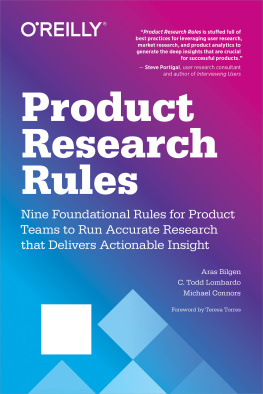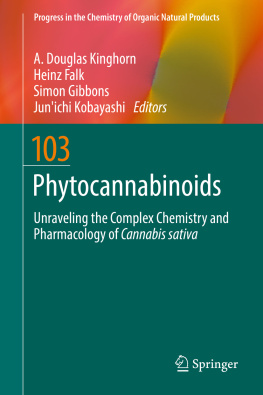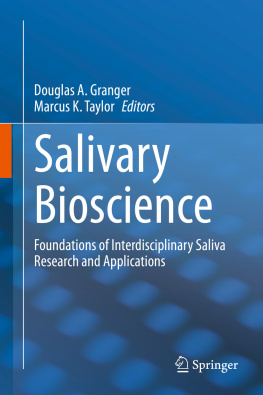A. Douglas Kinghorn - Cheminformatics in Natural Product Research
Here you can read online A. Douglas Kinghorn - Cheminformatics in Natural Product Research full text of the book (entire story) in english for free. Download pdf and epub, get meaning, cover and reviews about this ebook. year: 2019, publisher: Springer, genre: Science. Description of the work, (preface) as well as reviews are available. Best literature library LitArk.com created for fans of good reading and offers a wide selection of genres:
Romance novel
Science fiction
Adventure
Detective
Science
History
Home and family
Prose
Art
Politics
Computer
Non-fiction
Religion
Business
Children
Humor
Choose a favorite category and find really read worthwhile books. Enjoy immersion in the world of imagination, feel the emotions of the characters or learn something new for yourself, make an fascinating discovery.
- Book:Cheminformatics in Natural Product Research
- Author:
- Publisher:Springer
- Genre:
- Year:2019
- Rating:4 / 5
- Favourites:Add to favourites
- Your mark:
- 80
- 1
- 2
- 3
- 4
- 5
Cheminformatics in Natural Product Research: summary, description and annotation
We offer to read an annotation, description, summary or preface (depends on what the author of the book "Cheminformatics in Natural Product Research" wrote himself). If you haven't found the necessary information about the book — write in the comments, we will try to find it.
Cheminformatics in Natural Product Research — read online for free the complete book (whole text) full work
Below is the text of the book, divided by pages. System saving the place of the last page read, allows you to conveniently read the book "Cheminformatics in Natural Product Research" online for free, without having to search again every time where you left off. Put a bookmark, and you can go to the page where you finished reading at any time.
Font size:
Interval:
Bookmark:

The volumes of this classic series, now referred to simply as Zechmeister after its founder, Laszlo Zechmeister, have appeared under the Springer Imprint ever since the series inauguration in 1938. It is therefore not really surprising to find out that the list of contributing authors, who were awarded a Nobel Prize, is quite long: Kurt Alder, Derek H.R. Barton, George Wells Beadle, Dorothy Crowfoot-Hodgkin, Otto Diels, Hans von Euler-Chelpin, Paul Karrer, Luis Federico Leloir, Linus Pauling, Vladimir Prelog, with Walter Norman Haworth and Adolf F.J. Butenandt serving as members of the editorial board.
The volumes contain contributions on various topics related to the origin, distribution, chemistry, synthesis, biochemistry, function or use of various classes of naturally occurring substances ranging from small molecules to biopolymers.
Each contribution is written by a recognized authority in the field and provides a comprehensive and up-to-date review of the topic in question. Addressed to biologists, technologists, and chemists alike, the series can be used by the expert as a source of information and literature citations and by the non-expert as a means of orientation in a rapidly developing discipline.
All contributions are listed in PubMed.
More information about this series at http://www.springer.com/series/10169

This Springer imprint is published by the registered company Springer Nature Switzerland AG.
The registered company address is: Gewerbestrasse 11, 6330 Cham, Switzerland
Big data has emerged as one key term of the twenty-first century. Wikipedia, which itself is visible evidence of this development, defines the term as a field that treats ways to analyze, systematically extract information from, or otherwise deal with data sets that are too large or complex to be dealt with by traditional data-processing application software.
It is therefore not surprising that also in the field of natural product chemistry over the last few decades, cheminformatic methods have evolved to analyze databases. The current volume of Progress in the Chemistry of Organic Natural Products presents a collection of contributions by authors who are experts in this field.
The first contribution (Cheminformatics Explorations of Natural Products) by Jos Medina-Franco and his colleagues from the National Autonomous University of Mexico gives a broad overview of cheminformatics strategies that may be used to mine natural product spaces for their potential biological activity, toxicity, or biodiversity.
The following chapter Resources for Chemical, Biological, and Structural Data on Natural Products is written by a young team working with Johannes Kirchmair from the University of Bergen (Norway) and University of Hamburg (Germany). Therein, they critically review approaches for using cheminformatic tools including virtual databases, physical natural product collections, and resources for biological and structural data on natural products.
The chapter A Toolbox for the Identification of Modes of Action of Natural Products by Tiago Rodrigues from the Instituto de Medicina Molecular Joo Lobo Antunes (Portugal) reviews cheminformatics tools for the identification of modes of action of natural products from molecular docking to machine-learning methods.
Thierry Langer and his team from the University of Vienna (Austria) provide a detailed introduction into pharmacophore-based techniques and the underlying concept that can be used in natural products chemistry and exemplify respective projects (The Pharmacophore Concept and its Applications in Computer-Aided Drug Design).
Daniel Reker from the Massachusetts Institute of Technology (USA) illuminates the relevance of natural fragments for drug discovery in his contribution Cheminformatic Analysis of Natural Product Fragments.
Font size:
Interval:
Bookmark:
Similar books «Cheminformatics in Natural Product Research»
Look at similar books to Cheminformatics in Natural Product Research. We have selected literature similar in name and meaning in the hope of providing readers with more options to find new, interesting, not yet read works.
Discussion, reviews of the book Cheminformatics in Natural Product Research and just readers' own opinions. Leave your comments, write what you think about the work, its meaning or the main characters. Specify what exactly you liked and what you didn't like, and why you think so.

